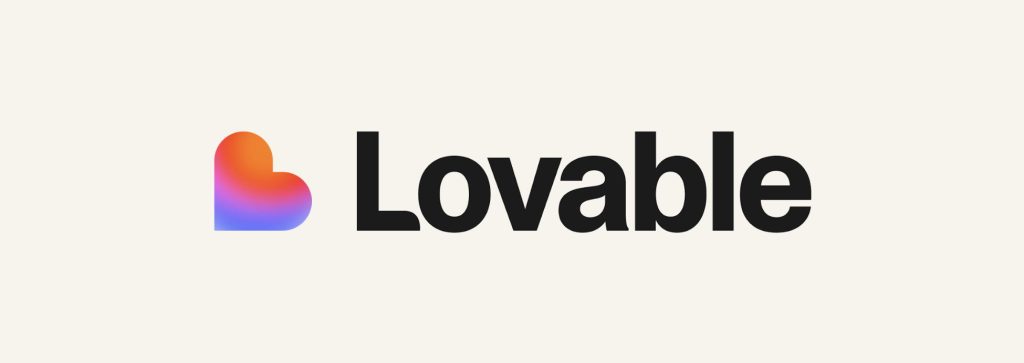How Lovable Achieved $17M ARR in Just 3 Months—Inside the Fastest-Growing AI Startup in Europe
In the rapidly evolving world of AI, some stories stand out not just for innovation, but for sheer execution speed. Swedish startup Lovable is one such phenomenon. With a bold promise—*"build apps without writing code"—they went from zero to a staggering *$17 million in ARR** in just three months. That’s nearly ¥120 million in revenue, and a growth trajectory that now ranks Lovable among the fastest-growing AI startups in European history.

So what makes this company so extraordinary? Let’s dive into Lovable’s unique founding philosophy, product strategy, and go-to-market execution—and uncover lessons that may inspire the next generation of AI tools.
From Open Source to Explosive Growth
Lovable was founded in 2023 by Anton Osika and Fabian Hedin, two Swedish prodigies with deep tech roots. Anton started coding at age 12, worked in particle physics, launched a previous startup, and raised $20 million. Fabian, similarly gifted, sold his first company in high school.
Their early collaboration resulted in GPT Engineer, an open-source project allowing users to describe web apps in plain English—and letting AI generate production-ready code. The project rapidly became one of GitHub’s fastest-growing repositories, validating a key insight:
AI tools for non-technical users represent a massive untapped opportunity.
But open-source traction wasn’t enough. The name “GPT Engineer” lacked brand clarity, and GitHub’s dev-heavy audience wasn’t aligned with their target market: non-coders eager to build apps.
This led to the birth of Lovable—a polished product version aimed at democratizing app development with a simplified, AI-first interface.
Rethinking App Development: Like Building With LEGO
What Lovable offers sounds deceptively simple: you describe your idea, and AI builds the app. But under the hood, their system solves a critical AI pain point—context management in large codebases, allowing for smooth transitions from concept to full app without technical bottlenecks.
They also integrated backend services like Supabase, enabling users to easily connect databases, manage collaboration, and track app versions—without needing to write backend code.
By November 2024, Lovable launched publicly—and that’s when the numbers exploded:
| Day 8 | $1M ARR |
| Day 30 | $4M ARR |
| Month 2 | $10M ARR |
| Month 3 | $17M ARR |
The ARR growth curve is one of the steepest the SaaS world has seen in recent memory. More impressively, their monthly retention rate exceeded 85%, outperforming even ChatGPT.
And all of this was achieved with a lean team of just 15 people, putting their revenue-per-employee at over $1 million.
Why Lovable Works: A Philosophy of Extreme Usability
Lovable’s success isn’t just about timing—it’s a masterclass in AI-native product design. Anton Osika credits their growth to a philosophy of radical simplicity and fast iteration:
“Identify the biggest bottlenecks and fix them. Don’t over-plan. Ship fast.”
Instead of mimicking the now-common chat interface, Lovable introduced modular UI edits. In early 2025, they launched Visual Edits, allowing users to change size, color, and text of elements directly—no chat required. It’s like using Figma, but for full-stack web apps.
Compared to rivals like Bolt and Replit, Lovable’s edge lies in usability:
- Instant visual updates without touching code
- Automatic GitHub sync—no need to manage file systems
- A fully integrated frontend + backend + deployment flow
Their MVP approach was surgical: build the core in a weekend, polish it over a few weeks, release fast, and iterate based on user feedback. This speed helped Lovable stay ahead of emerging competitors in the AI dev space.
Community First, Hype Later
Beyond tech, Anton’s deep involvement in Stockholm’s AI community helped Lovable build early trust. GPT Engineer’s initial popularity (over 50,000 GitHub stars) gave them visibility among both developers and curious onlookers.
They didn’t stop there. Lovable shared constant updates on X (formerly Twitter), showcased user-built apps, and published transparent growth metrics—creating a FOMO-driven flywheel that amplified their story organically.
Today, Lovable sees 10 million monthly website visits, putting them within striking distance of leading dev tools like Cursor (13 million/month).
Why Lovable’s Model Matters
While Big Tech still wrestles with monetizing large language models, Lovable has quietly built one of the most efficient AI business engines of the post-ChatGPT era.
Their success proves a critical point: the real AI revolution might not come from technical breakthroughs, but from repackaging complexity into delightful, usable tools for the 99% who don’t code.
In the $500B software development market, the next big disruption may be sparked by those who've never seen a for-loop.
🔗 Explore More on AI-Kit.site
Want to discover more tools like Lovable? Browse our curated AI Development Platforms or explore the No-Code Builders section to find tools transforming ideas into reality—no code required.